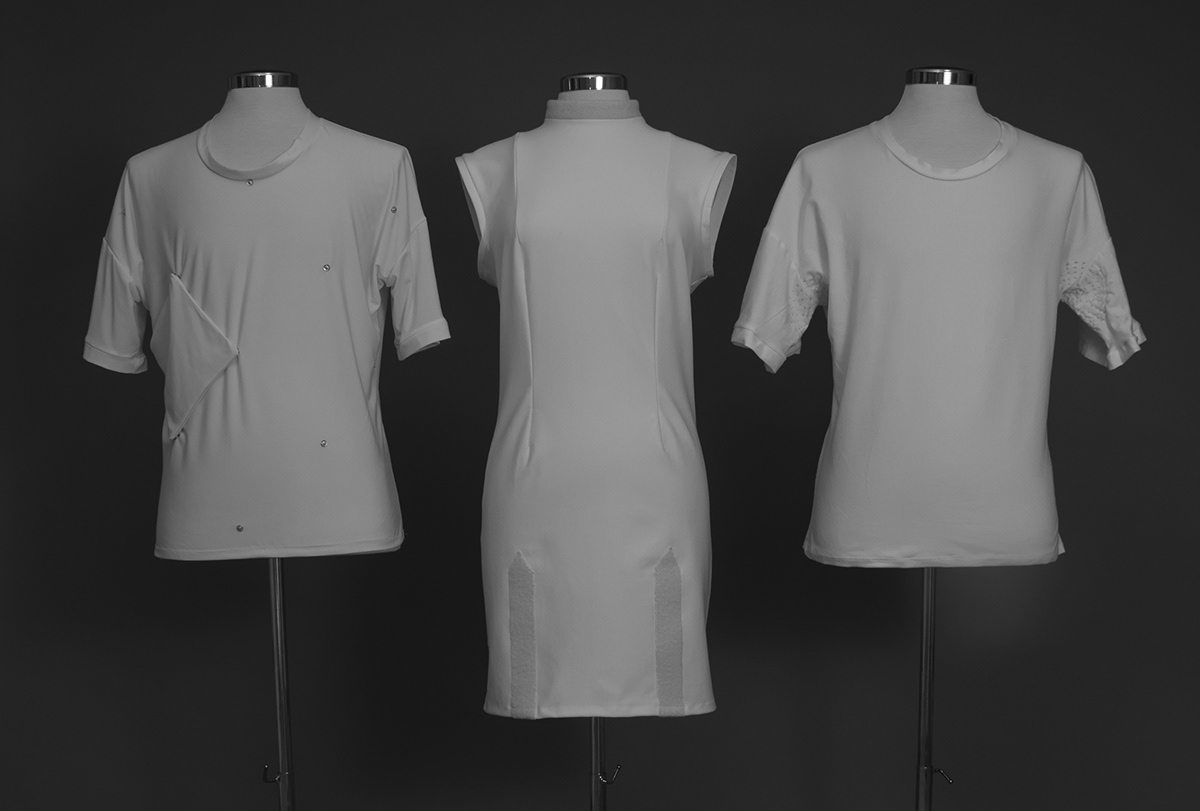Ablutions

It seems society has established an expectation of us to be clean and a standard for what is considered clean. We find ourselves obsessed with almost religiously cleansing our bodies, spaces and possessions. If we deviate from the expectations of impeccably clean we are shunned, shamed and frowned upon for being perceived dirty, tardy or smelly. Yet these societal expectations are nary grounded in science. We have surmised that being clean is good as it prevents diseases from spreading and originating, but we have over-corrected ourselves to the point that new diseases are born from our extreme cleanliness2 and in our efforts to become impeccably hygienic, so irrationally “clean”, we waste away resources and pollute our environment.



Stains commonly prompts clothing to be washed. I often wash my clothes as soon as even a small stain appears. Polyester is, again, a fibre where the main sustainability gains can be achieved in our treatment of it13. This polyester t-shirt prevents or covers up stains as they happen. It features press-buttons distributed across its surface and comes with patches featuring corresponding press-buttons. Either it can be worn without the patches initially, and when a stain appears it can simply be covered up by attaching a patch. This would reduce the need for frequently washing the t-shirt. Or the t-shirt could be worn with patches covering its whole surface initially. If an accident was to happen, the stained patch/es would be removed leaving the t-shirt still brilliantly white. Once a large amount of stained patches has been accumulated only those get washed, reducing the frequency for using the washing machine.



Sweat and smells are common reasons for us to consider a garment dirty. Cotton is also a fibre where the main sustainability gains can be achieved through our care and wash behaviours. This commonplace cotton t-shirt has been hand-embroidered under the armpits with thick wool yarn, mostly present on the inside of the garment. Wool has the abilities to absorb moisture, prevent smells and self-clean. By integrating it with the t-shirt this way, the t-shirt should be appreciated as clean for much longer and thus need washing much less. The wool even allows for the t-shirt to be aired out when unclean as wool is self-cleaning. And because wool is delicate it dictates a cooler wash and no tumble drying as that would distort the t-shirt.


When we wash our clothes we often do not know what programme to use. This viscose, elastane, polyester and wool mix fibre dress enforces more awareness of how to do laundry more sustainably. Perhaps one would assume to choose the programme most appropriate for the main body of the dress, but as the wool details are around the neck and up the skirt, this choice could tighten the dress around the throat and distort the skirt. The rule of thumb should rather be to adapt the washing programme according to the most delicate material in each wash. As wool requires low temperatures, a delicate wash and no tumble drying, this whole dress requires the same. Despite its main fibre content that could be washed at high temperatures and roughly. This enforces less energy wasting processes in the laundry.
By creating these drivers for recalibration of the washing paradigm within our own ways of treating our textiles, I hope to encourage more sustainable ways for our everyday ablutions. I attempt here to change myself to do better and in doing so and making my experience available to the public, I hope more people would change with me. Through this, I am able to approach a gargantuan complex system full of issues that need resolving for sustainable gains through small actions today, galvanize others to do the same and together we would have a significant impact in making humanity treat ourselves and our planet more sustainably.
As the textile industry is so big, so polluting and so complex we need to find multiple micro and macro avenues to become more sustainable. Washing is but one such aspect, but it is within my grasp, it is within each of ours grasps, and if we all understood our actions better, challenged our thoughtless everyday rituals more and changed what we are able to for the better it would have a massive global effect.
References:
AEG, Care Label Project, [e-pdf], https://www.aeg.se/siteassets/common-assets/04.-care/inspiration/clp/care_label_project_lookbook.pdf , (accessed 3 January 2019).
Cambridge Dictionary, Ablution, [website], https://dictionary.cambridge.org/dictionary/english/ablution#translations , (accessed 3 January 2019).
Filippa K, Filippa K Care How to Wash, Mend and Care, [website], https://www.filippa-k.com/se/filippak-world/care , (accessed 3 January 2019).
Fletcher, K., Sustainable Fashion and Textiles: Design Journeys, London, Earthscan, 2008.
Kemikalieinspektionen, Kemikaliegrupper, 1 December 2015, https://www.kemi.se/prio-start/kemikalier-i-praktiken/kemikaliegrupper , (accessed 3 January 2019).
Naturvårdsverket, Organiska Miljögifter, 5 July 2018, http://www.naturvardsverket.se/Sa-mar-miljon/Manniska/Miljogifter/Organiska-miljogifter/ , (accessed 3 January 2019).
Skotnicki, S., Yes, There’s Such a Thing as Being Too Clean, [website], 30 March 2018, https://thriveglobal.com/stories/yes-there-s-such-a-thing-as-being-too-clean/ , (accessed 3 January 2019).
Svenskt Vatten, Dricksvattenfakta, [website], 6 March 2018, http://www.svensktvatten.se/fakta-om-vatten/dricksvattenfakta/ , (accessed 3 January 2019).
Vittorio Aureli, P., Less is Enough: On Architecture and Asceticism, Moscow, Strelka Press, 2014.








